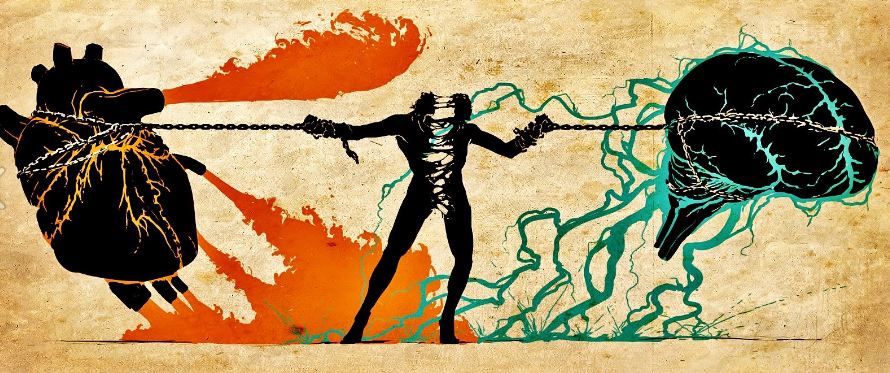While there are many factors that can drive the process of selecting your first motorcycle, the ultimate selection is often driven by your heart rather than your head. It doesn’t matter if you’ve been pining away for years over a specific Bike or you find yourself gobsmacked with lust over some newly-announced model.
The heart has its reasons which reason knows nothing of… –Blaise Pascal
For most people, the heart vs head battle gets inverted by the time it’s time to buy a second (or third, or fourteenth) motorcycle. The more your ride, the more you learn about how you like to ride and what you like, love, and loathe about one bike versus another.
Naturally, there are exceptions to this tendency. There are bikers that simply like to have the latest bright shining thing. These individuals tend to purchase a new bike every year or two, often the same model over and over. This discussion is not about these people.
My own personal experience in motorcycle purchases followed more of a head-first, heart-second, and head-third pattern.
Bike #1
My Head Buys a 1983 Kawasaki KZ750LTD
Long, long ago in a galaxy far, far away, I was just a few years out of college and dining out with my (now ex-) wife. Out of the blue, she says to me, “I want to learn how to ride a motorcycle”.
I reply, “Then we should pick one up”.
My mind was immediately filled with images of a 1949 Harley-Davidson Hydra-Glide tricked out with a windshield, leather saddlebags, a passenger backrest, and a luggage rack. Not this exact bike, mind you, but something that looked like it — something like the Harley-Davidson Heritage Softail. I’d wanted one for years. Surely, this was the opportunity to pick one up, yes?
That was when the head, with it’s intimate knowledge of our limited income and ongoing expenses in renovating a 1911 duplex, reminded me that several hundred dollars-per-month in motorcycle payments was probably not a good idea.
At that juncture, I had been riding since high school but the only motorized two-wheeled conveyance that I’d actually owned was a 50cc Garelli moped. Consequently, I didn’t know any better when I found a 1983 Kawasaki KZ750 LTD, complete with a Windjammer fairing, radio, and an adjustable backrest with luggage rack. It was a good deal, but it was a bit top-heavy, which made it less than ideal for a beginner (i.e., wife).
Here are a few of the other lessons learned from riding the KZ750LTD:
- The fairing/windshield was really nice at highway speeds.
- The radio was a nice feature, but you couldn’t really hear it when flying down the road.
- The inline-four engine was so wide that the inside of my knees would burn on the cam covers, especially when I was wearing shorts. (Yes, my name is Ghost and in the foolish, impetuous, clueless years of my youth I rode without proper gear — oh, the shame…)
- A four-speed gearbox made for a loud and buzzy ride if you were out on the highway for very long.
- I hated lubing the chain.
We ended up selling the KZ after almost three years of ownership.
Bike #2
My Heart Buys a 1992 H-D FLSTC
Heritage Softail
When we decided to leave Milwaukee and return to Michigan, I decided that, if I was going to buy a Harley, I should do it while I was still in Milwaukee. You see, Milwaukee is the world headquarters for Harley-Davidson and a featured perk of working for H-D is that you were able to one bike per year at cost. With so many of the local H-D employees leveraging the purchase plan every year, there was no place in the country that had a better used Harley market.
My Harley purchase had very little to do with the lessons learned from owning the KZ750LTD. I simply wanted it. It did present an improvement over the KZ in terms of gearbox (five speeds instead of four) and vibration (stronger but at a lower frequency). It had a huge windshield and a belt drive (no more chain to lube — yes!). But truthfully, these minor rationalizations didn’t have much of an impact. I was going to get the bike I wanted.
What I wanted was that old 1949 Hydra-Glide look but I had no intention of buying a 50-year-old bike. The current Heritage Softail model was close enough, and came with the recently introduced (at the time) Evolution engine. I eventually found one-year-old 1992 FLSTC Heritage Softail with a little over 500 miles on it. The owner explained that his wife was an H-D accountant and they purchased the bike through the employee purchase program. They enjoyed it for a season and were selling it to obtain some cash for him to go back to college for a masters degree.
This bike I didn’t have a single modification; it was literally bone stock and barely broken in. It was a clean slate ready for personalization and customization. (Aside: someday I need to write a post on the difference between these two terms.) As a bonus, it was clad in a classic two-tone aqua and cream paint job.
I barely bargained with the seller. I just asked him when I could give him the money.
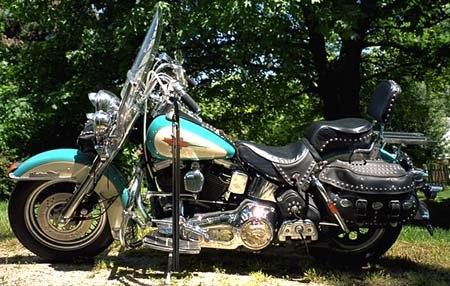
As some of you have already surmised, this is the bike that became my beloved Cruiser and nearly 150,000 miles later it is still in service.
Bike #3
My Head Buys a 2006 H-D VRSCR StreetRod
Motorcycle riders evolve. We try new things, take different trips, and test ride interesting bikes. Some riders find they enjoy all aspects of riding and find a need for a long-and-low cruiser for summer evenings, a liter sport bike for track days, and a Barca-lounger touring sled for cross country trips. Other riders ride street bikes for years only to switch exclusively to dirt-bike riding. Any way you cut it, if riding is a passion, your needs will change as you log more miles.
In my case, I developed a love for sport touring, though I didn’t know to call it that at the time. After several years of riding the Cruiser (bike #2) back and forth across the continent, I spent one late afternoon following my friend Chuck on a very spirited ride through the Bighorn mountains west of Buffalo, WY. That ride marked the hardest that I had ever ridden the Cruiser… and I liked it.
Over the next few years, I developed a tendency to ride the more challenging roads at a fairly aggressive pace. Rest assured, I wasn’t exactly blowing past guys on Yamaha R1s (this is on a Harley Softail, after all), but I was enjoying myself. Curiously, I didn’t develop a strong attraction to the race track. I mean, an occasional day at the track or drag strip is certainly fun, but I didn’t feel the need to buy a bike purpose-built for those conditions. I still liked to take my bike on cross-country tours and got my race jollies attacking the roads that carved through canyons or wove their way over mountains or along river banks.
Naturally, these more spirited riding tendencies seriously exposed the limitations of the Cruiser’s engine and the flaws in it’s frame and suspension. I made as many upgrades as I could, but found myself spending more time trying to improve the Cruiser than riding it. I’d simply pushed that bike as far as I could, and it was time for something else.
This is where the head takes over. Cool calm analysis of my requirements, followed by ruthless elimination of the contenders, guided me towards my next bike. Well… not completely ruthless. I elected to heavily weight my search towards my favorite brand: Harley-Davidson.
In 2001, H-D debuted their first water-cooled motorcycle: the V-Rod. It was more powerful, more technologically advanced, and complete blast to ride. Here was a bike whose out-of-the-box motor was every bit as powerful as the heavily modified unit in my venerable Cruiser. But my logical head reminded me that the V-Rod still didn’t have any better lean angles than the very Cruiser that I wanted to upgrade and it only sported a 3.5 gallon gas tank. Riding cross country 100 miles at a time? No, thank you.
Then in 2006 the Motor Company debuted a new V-Rod model, the StreetRod. This was the same powerful water-cooled Revolution motor, but with the following differences:
- Taller frame for better lean angles and greater ground clearance.
- Custom triple tree for reduced rake for more nimble handling.
- Inverted forks.
- Improved rear suspension.
- Brembo four-piston calipers.
- Mid-set controls.
- A five-gallon gas tank.
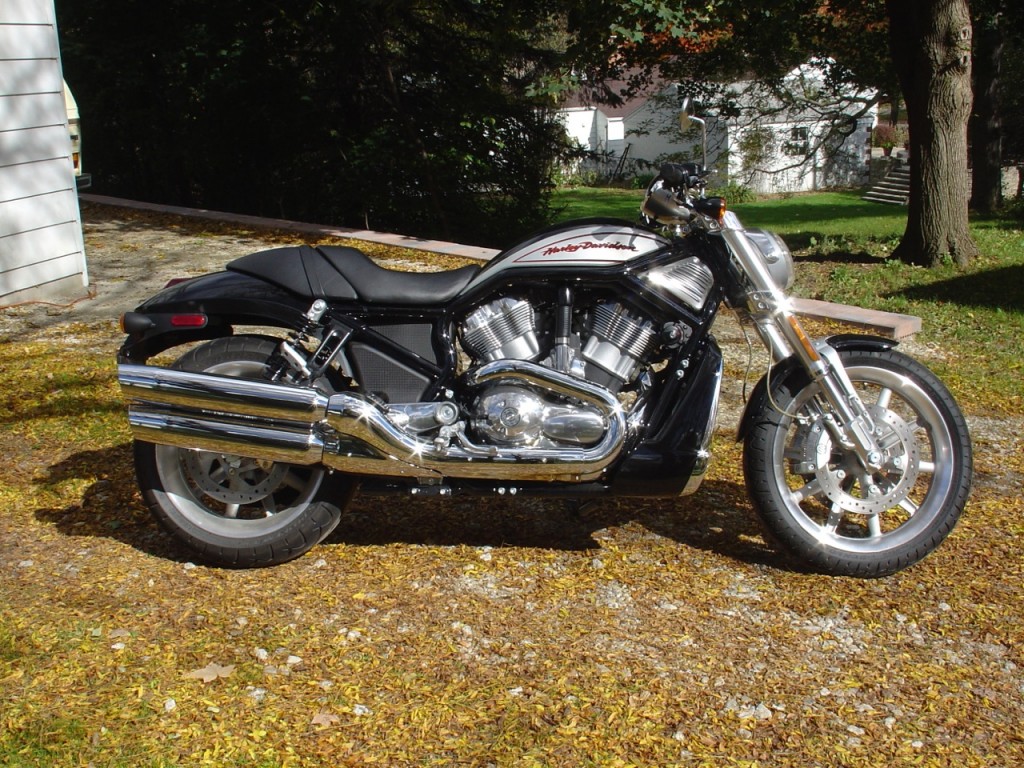
Now this was a bike I could make work. True, it didn’t have the touring features that I required, but these accouterments could be added later. Several nay-sayers that reviewed the StreetRod dinged it for trying to be a sport bike and failing. Others were confused by its cruiser-like-sporty-feel attributes, but enjoyed it in spite of not being able to classify it.
This is where it gets complicated. Depending on what they expect from their motorcycles, different riders will view the new StreetRod as different things. Accomplished cruiser riders will view it as a resounding success. “Standard” riders will see it as another large, solid motorcycle for commuting and weekend fun rides. However, Sportbike riders will see this bike as a failure and just another example of Harley’s inability to build a proper sportbike. Me? Well, I’m all f@c&ed up about it.
—, Motorcycle.com
After adding a boatload of tour-oriented accessories, this bike became my Vector.
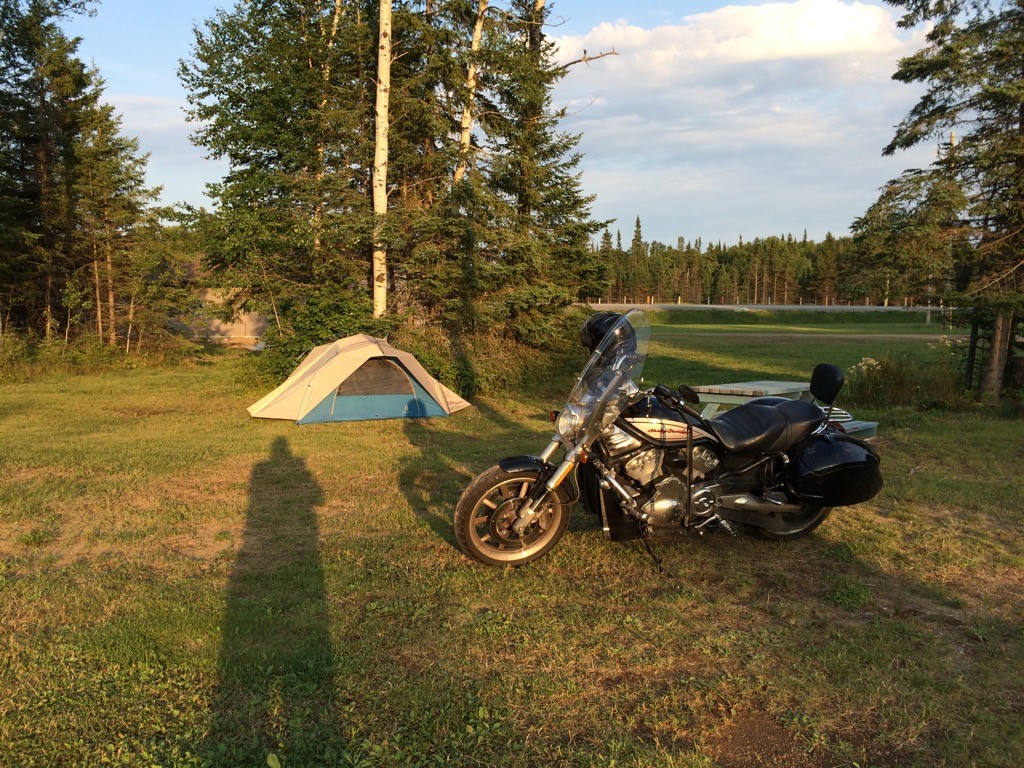
Unfortunately, the StreetRod became something of a unwanted bastard stepchild in the H-D product line, lasting only two model years (2006-2007) before it quietly disappeared. When the other V-Rods got ABS and other electronics upgrades in 2007, the StreetRod was left out because of its unique frame. The aftermarket offerings for it are nearly nonexistent. In spite of these challenges, it has been a reliable outlet for my sport-touring needs for 85,000 miles from 2006-2016.
Bike #4
My Head (and Heart) Buys a 2015 BMW K1600GTL
As I stated earlier, riders evolve. During my last few years riding the Vector, as nearly all of my friends upgraded to post-2009 (frame upgrade) H-D touring models, I found myself wishing for a bike with modern safety and creature comfort features. While I still love the Vector, I find myself wishing for at least a minor upgrade in thrust and creature comforts like ABS, cruise control, easy-to adjust suspension, etc. I’ve also found a passenger who loves to ride with me but she finds the passenger accommodations on the Vector uncomfortable on long days.
What to do?
Riders are always looking for interesting new bikes to debut and I found my interest piqued when BMW showed off its new Concept 6 bike at the 2009 EICMA show.
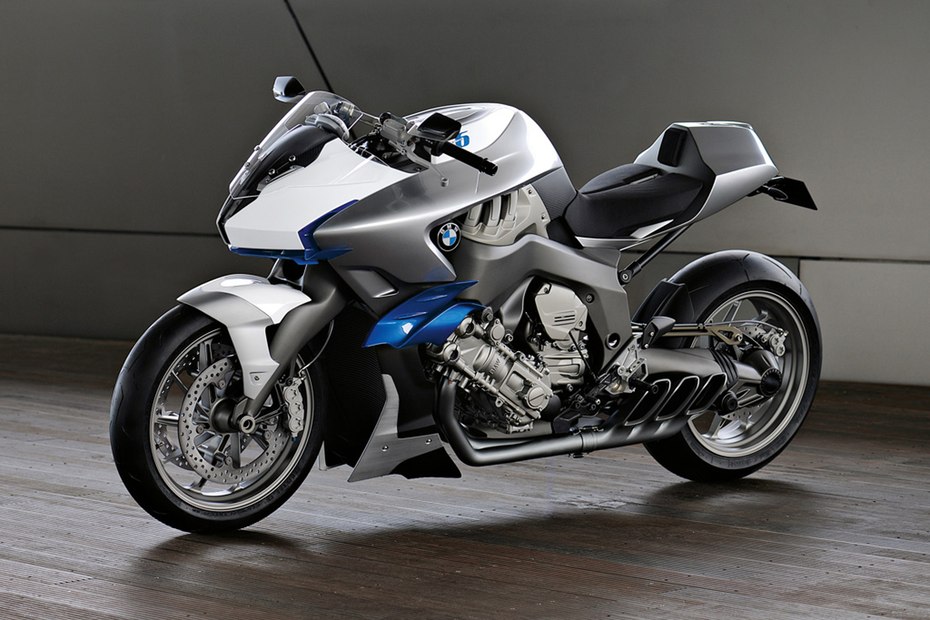
While the bike itself wasn’t all that interesting to me, the engine seemed rather compelling. This was an inline six that was narrower than the inline four that I had in my old Kawasaki. That same engine would redline around 8000 RPM but have 80% of maximum torque available at 2000 RPM.
Sounds like fun.
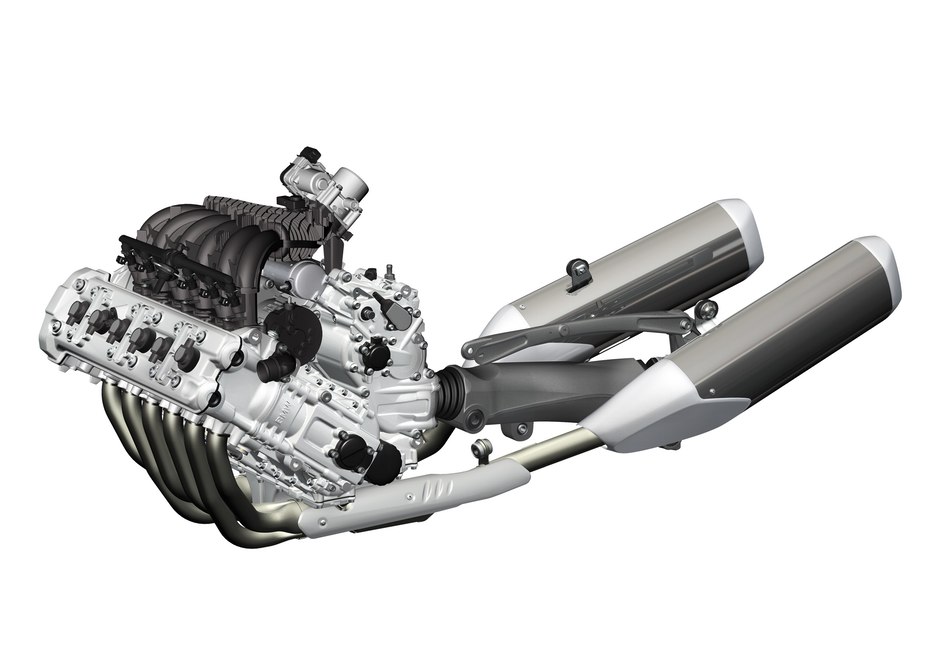
For me, the most interesting part of the press release was the following snippet:
The new BMW straight-six will further expand the K-Series in the foreseeable future. The first model to be introduced will be an innovative and luxurious BMW touring machine.
Scratching my chin, I recalled that the only six-cylinder motorcycle that I ever entertained any notion of owning is the Honda Goldwing. Most dismiss the Goldwing as being too big but my friend Sam rides the wheels off his bright canary yellow Goldwing and has proven time and again that he can hang with all but the most technically adept sport bike riders. Still, the Goldwing, well, just isn’t my style.
BMW motorcycles, however, appeal more to my German engineer sensibilities. After all, I have been a VW and Audi man for a long time. I bookmarked the BMW inline six in the back of my mind and made a point to keep an eye on its development.
In 2010, I read the announcement of the K1600GT/GTL models. In 2012, I read the first reviews of the production bikes. It certainly sounded like an impressive ride but I back-burnered the idea of getting one because:
- I had just finished paying off the Vector.
- I didn’t want to be one of the owners working all the kinks out of a bike with a new chassis, a new engine, and a new electronics package.
- I was convinced that H-D would put a water-cooled motor in a touring frame sometime soon.
Fast forward to around Labor Day of this year and I happened to catch the Motorcycle.com Best of 2015 articles and, sure enough, the K1600 took best touring bike for the third year running. With the V-rod now up at over 85K miles and lacking features that are common today even on lesser bikes, I decided to look into the used market for K1600s.
Fast-forward to the fall of 2015, shortly after yet another 6,000+ mile trip on the Vector, running it’s odometer up over 85,000 miles. I happened to catch the Motorcycle.com Best of 2015 articles and, sure enough, the K1600 took best touring bike for the third year running. A review of the 2015 K1600GTL Exclusive indicated that the K1600 lineup hadn’t changed much since BMW worked out most of the kinks in the 2013 model year. A visit to the invaluable K1600 Forum revealed that there had been no horror stories of reliability problems with the new motor. Meanwhile, H-D is taking its own sweet time in cautiously introducing water-cooling to its customer base. (sigh)
So, I found myself looking into the market for used K1600GTLs and found the market surprisingly active. There seem to be a healthy number of two- or three-year-old models with 5k or fewer miles on them. (I guess there are plenty of wealthy riders buying this beast as a part of their mid-life crisis… and then getting rid of it after a few years.) I happened to find one for sale in my area and made arrangements to take it for a ride. My overall impression…
I be like, dang.
What an impressive piece of machinery. It is a major change in character from what I’m accustomed to… but I think I can adjust. Several of the reviews for it mark a few points off the score for low-speed parking-lot maneuvering. The reviewers must ride nothing but sport bikes. Coming from big, heavy, long-wheelbase Harleys, the K1600 is no-big-deal in the parking lot. It’s got all the whistles and bells that make it easier to gobble up the miles and adjust for changing conditions. As for the engine? Let’s just say that it appeals to me on a deeply personal level.
Further investigation (and another test ride) revealed that the more sporty (and newly water-cooled) R1200RT was a little more nimble and had other minor advantages over the K1600. For two weeks I was in a GTL vs RT conflict, but eventually my heart took over. Every time I thought that the RT might be the better choice, my heart would gush: Oh, but that engine!
While I was poking around for a nice lightly used K1600, I discovered that the 2015 models marked the first time that the K1600 was available in black (yes, the color is important to me). Add to that a few 2015 software upgrades and features like hill-start control and keyless ignition and it was becoming harder to limit my search to the less expensive two-year-old used bikes. When I found a dealer in Milwaukee, WI that had several 2015s to sell (and 2016s beginning to arrive in crates), I was able to make a very good deal on a demo bike with ~1700 miles on it.
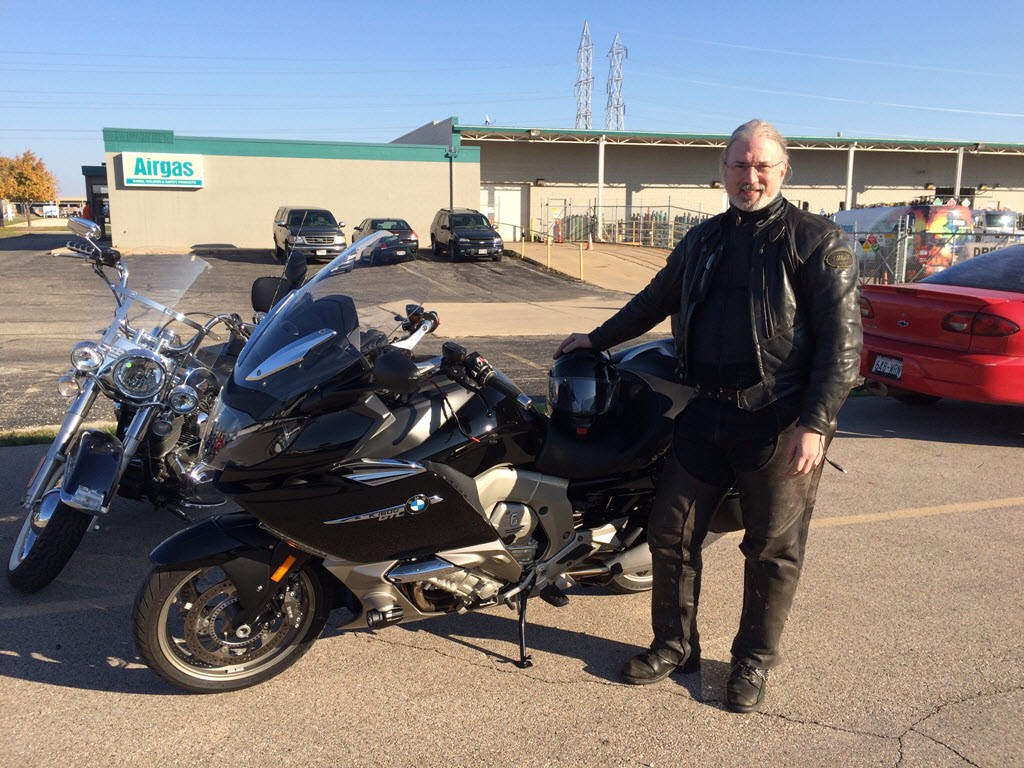
As a result, I attribute my purchase of the Nightowl (my 2015 K1600GTL) mostly to my head but with a nod to my heart for steering me away from the R1200RT.
Note: The name Nightowl stems from the appearance of the big daytime running light rings on either side of the primary headlight reflector. It makes the front of the bike look a bit like the face of an owl.
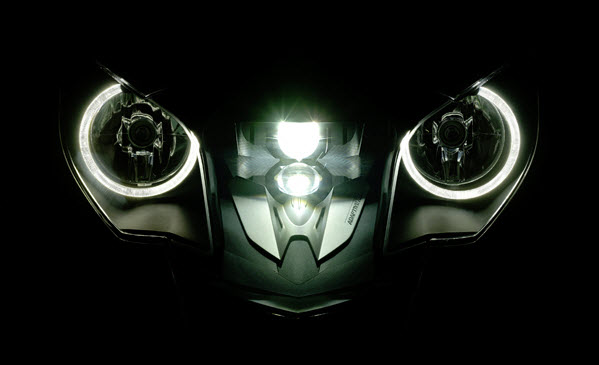
Summary
Motorcycles tend to elicit knee-jerk heart-driven purchases. If you’re independently wealthy and can afford a garage full of 25 bikes, that may work for you. The rest of us working-class dogs need to use our heads and make sure the few purchases that we can make are smart purchases. Sure, let the heart steer your passions a bit, but make sure your head keeps things in balance. It certainly worked for my most recent purchase… right up until Harley debuts a new water-cooled V4 touring platform.
Yeesh. (roll eyes)

